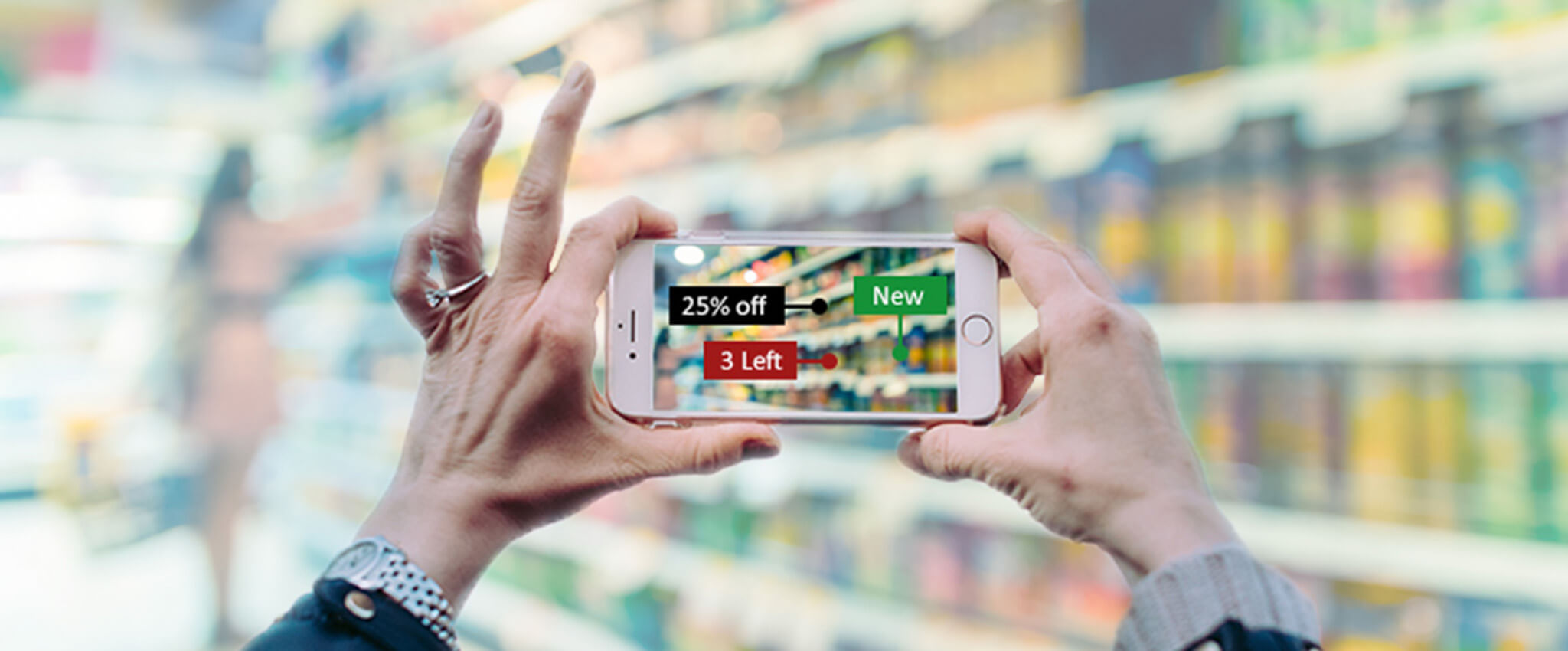Augmented reality (AR) is technology that superimposes virtual images onto a user’s vision of the world, thus providing a composite view. In other words, AR blends digital data with real-world imagery via a camera lens. And with this connection, AR grocery store shopping is helping to amplify and redefine the shopping experience.
How AR is Used in Grocery Stores
In short, AR uses computer vision technology to identify the location of a shopper inside a store and then applies integrated store layouts and up-to-date stock information to show product details and other relevant data to guide a customer through the shopping experience.
AR allows shoppers to browse store shelves with their smartphones to receive personalized product tips, recommendations and coupons that are superimposed on their screens. It’s just like having a personal shopping assistant in the palm of their hand. According to AR developers at tech company Dent Reality, “By eliminating the typical layers of abstraction and using the physical world as an interface, they have clear guidance across their entire journey.”
So, how does it work? To use AR technology in a retail setting, customers download an AR app on their smartphone, register an account and complete their personal profile with key details and preferences. For grocery stores, these may include favorite cuisines, special diets, allergens, taste profiles and other food-related information. Then, as they browse the aisles and point their phone’s camera lens at merchandise, the app will recognize the products and display digital pictures and words on top of the images shown on-screen.
The Benefits of AR
AR enhances the grocery shopping experience and makes the product search process easier. AR can even help shoppers make better decisions about the products they buy. For example, a shopper can specify that they are looking for a frozen meal brand that is low in sodium, on sale and highly rated by customers. With this information, as they scan the freezer, the app will visually indicate which available frozen meals meet their criteria.
AR apps can also help grocery retailers understand customers better, based on data collected about their tastes and preferences. This information provides insight into which products are most often considered, bypassed, or selected by shoppers. It can also help create huge marketing opportunities.
Sima Nadler, Retail Research Leader at IBM, said, “Consumer expectations are soaring, and people want information and advice about the products they’re going to buy. By closing the gap between the online and in-store shopping experience, marketers can appeal to the individual needs of consumers and keep them coming back.”
The benefits of AR for both shoppers and retailers is enhanced when adding advanced product display systems, such as those available from Retail Space Solutions. For example, installing SpaceGrid II pusher systems from Retail Space Solutions keeps products organized and front-faced on store shelves all day long. AR can make grocery shopping trips not only more productive, but more entertaining and informative.
